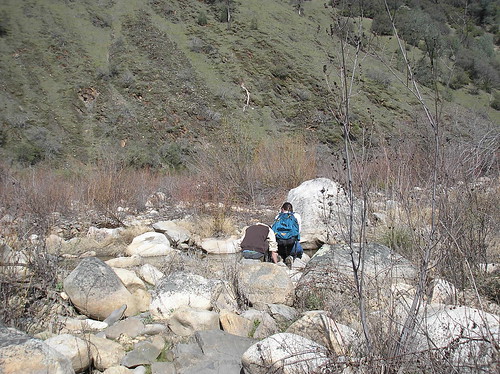Do you realize we have participants from England, the Netherlands, Spain, and Australia as well as the United States? If you have some time over the next week, check out the links on Mr. Linky, especially those from Challenge #1. You will be greatly encouraged to see what other families are finding in their Outdoor Hour. For the rest of you that have made it this far, I want to thank you for making the effort to offer nature study to your children. Over the last three weeks, I have read every single blog entry that was shared and I have been so humbled by how fast the desire to be outdoors has formed in the families that have participated. Over and over I have heard from moms that they have always desired to have a study of nature in their family but just needed the extra push to get started. I am going to keep putting up challenges as long as there are readers that want to participate. Here's this week's assignment.  Outdoor Hour Challenge #4 It’s Coming Into Focus 1. In the Handbook of Nature Study, read “The Uses of Scientific Names” on pages 10 and 11. Also read “The Field Notebook” on pages 13-15. Highlight or underline the points that you would like to remember. 2. I am going to suggest that you pick a focus area for your nature study. Taking into account what you have close at hand, what season it is, and your child’s interest, look through the table of contents in the Handbook of Nature Study and pick one section that you will focus on for the next six to eight weeks. It might be a good time to study garden flowers (bulbs), wildflowers, birds, or trees if it is already warm in your area. If you still have lots of snow, you could focus on mammals, birds, or water forms. (For suggested nature study rotations using the Handbook of Nature Study, see the Ambleside Online’s nature study page for ideas. http://amblesideonline.org/NatureSch.shtml) If you have chosen a focus area, turn to the introductory page for that section and take the time to read just that page in the Handbook of Nature Study. 3. Take your 10-15 minute walk outdoors. Encourage your children to observe quietly for some of that time, helping to train them to be aware of the sounds as well as the sights of their own backyard. If you have chosen a focus, spend a few minutes looking for an object to study. Be alert to ideas for further research in your focus area. For example, if you have chosen birds as your focus area, you can look for feathers or nests as well as the birds themselves. 4. Follow up with discussion and research in your focus area if you have chosen one. If you have chosen a focus, begin a list of items that you have observed that fall within that subject. For example, if you have chosen birds as your focus, try to identify a bird you saw today, look it up in the Handbook of Nature Study, and read more about that particular bird if possible. Add the bird’s name to your list of birds seen for the term. Please Note: If your child found something to research other than an object from your focus area, be flexible and go with their interest. 5. Give the opportunity for a nature journal entry. "The book should be considered the personal property of the child and should never be criticized by the teacher except as a matter of encouragement; for the spirit in which the notes are made is more important than the information they cover." "The making of drawings to illustrate what is observed should be encouraged."Last week I suggested a journal page after observation and discussion. Offer the opportunity once again for your child to draw and write a page to add to their notebook. I have found that if I pull out my nature journal and draw, the children usually want to join me. Model a simple journal entry if you need to. Remember it can be as easy as a quick drawing, a label, and the date. The whole idea is to start a new habit. Modeling the behavior, setting a good example with our attitude, and giving our children plenty of subjects to draw will all encourage them to give nature journaling a try. For younger students, outlining the object in the nature journal and then having them color it in is a perfectly acceptable alternative to drawing the object. You can also do a rubbing by placing the object under the paper and then rubbing it with the side of a crayon.  6. Post an entry on your blog sharing your experiences. You can link up by clicking the carnival button or you can send them directly to me: harmonyfinearts@yahoo.com. |

You can purchase all of the first ten challenges in a convenient ebook along with custom notebook pages.























